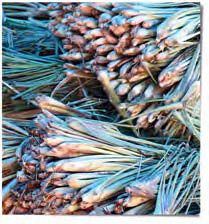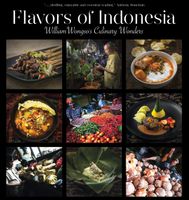Lemongrass
Sereh
Published 2016

While lemongrass usually comes as a whole stalk, many Indonesians are more familiar with the term daun sereh, literally translated as lemongrass leaf. This terminology originated because many cooks make use of lemongrass by tying it into a knot, and adding it to a dish as it cooks, and because it was be used to cure many sicknesses for many centuries, especially in villages. Another way of cooking lemongrass is by chopping it and grinding it into flavoring pastes. Both methods will impart a citrusy flavor that is widely used to balance savory dishes, from broths to thick curries, and refreshing beverages. Lemongrass is easily found growing everywhere, and people pluck it rather than buy it in the market. However, regardless of the source, the rule of freshness remains the same: the lemongrass has to be firm and thick, because the thicker the stalk, the tastier it will be, and it should have greenish white stalks with no wrinkles. Lemongrass should be sliced as thin as possible, since it does not grind easily in the food processor.
Become a Premium Member to access this page
Unlimited, ad-free access to hundreds of the world’s best cookbooks
Over 160,000 recipes with thousands more added every month
Recommended by leading chefs and food writers
Powerful search filters to match your tastes
Create collections and add reviews or private notes to any recipe
Swipe to browse each cookbook from cover-to-cover
Manage your subscription via the My Membership page
Monthly plan
Annual plan
Part of
Advertisement
Related Recipes
-
-
-
-
Related Reference
-
-
-
-
Advertisement



